Table of Contents
Introduction
Imagine this: You’re taking a morning walk by the side of a lush green lawn. Birds are chirping, butterflies are fluttering around, and beautiful flowering creepers line the sidewalk in shades of red, blue, orange, yellow, violet, and pink. Dreamy, isn’t it?
Now, you can experience that beauty every day right in your own garden. With the right flowering creepers, you can transform your outdoor space into something that feels like a vacation resort garden.
Curious to know your options? You’re in the right place.
Flowering creeper plants are a beautiful and practical addition to any Indian garden, terrace, or balcony. These plants grow by spreading along the ground or climbing walls, trellises, and fences, turning plain spaces into vibrant, colorful landscapes.
Whether you’re looking to brighten up your garden borders, cover bare walls with blooms, or protect soil from erosion, there’s a flowering creeper for every purpose. In this blog, we explore 15 popular flowering creeper plants each with its own unique charm, growing style, and benefits.
And to make your selection easier, we’ve also categorized these creepers at the end of the blog based on use, light needs, and more.
So, without further delay, let’s dive into the blog!
15 Best Flowering Creepers
Moss Rose
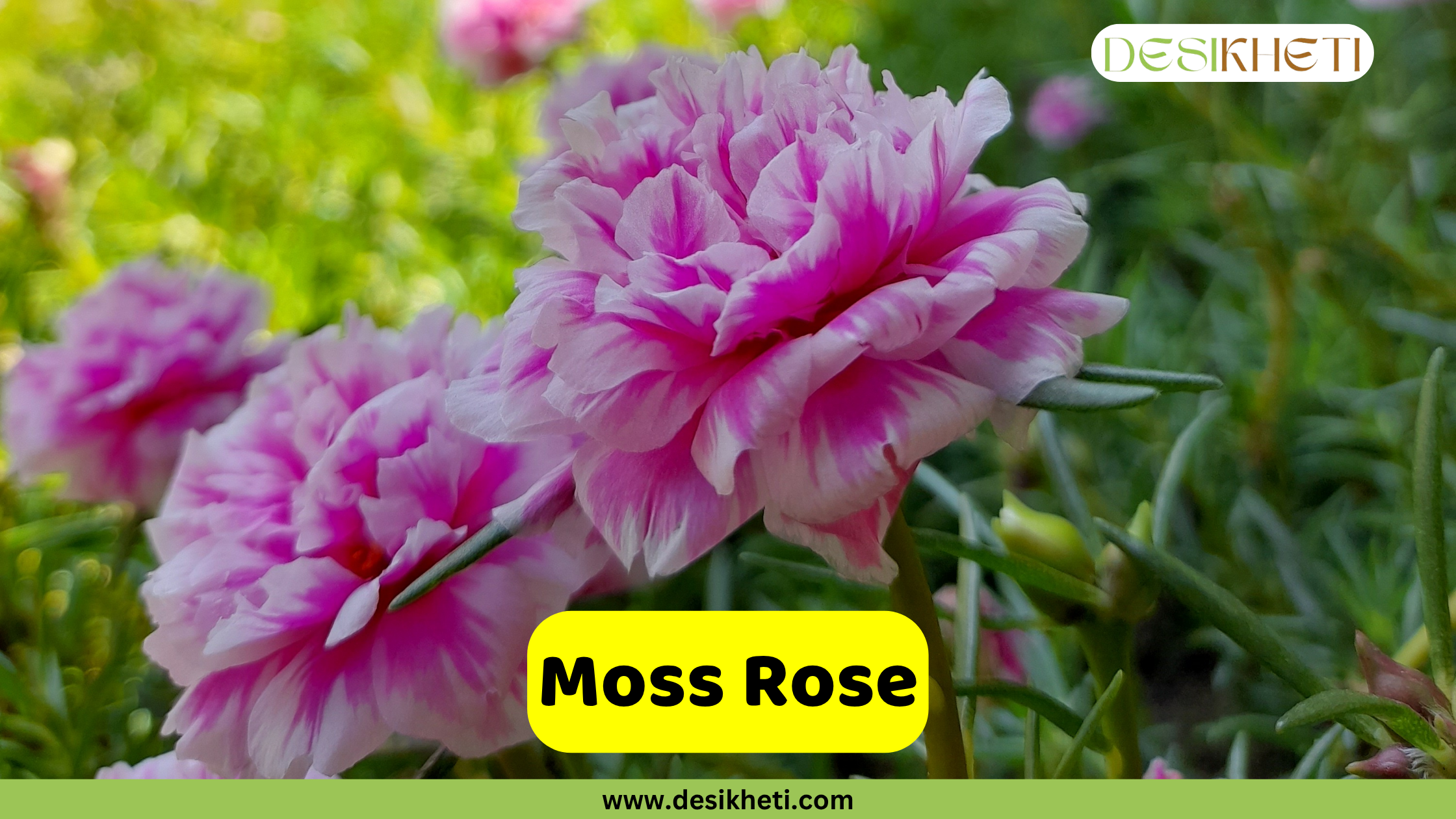
Botanical Name: Portulaca grandiflora
Moss Rose is a vibrant, low-growing succulent creeper that forms dense mats of fleshy, needle-like leaves. It is admired for its bright, cup-shaped flowers that come in a variety of shades including red, pink, yellow, orange, and white. This plant thrives in dry and sunny locations.
The blooming season typically lasts from late spring to early autumn, with flowers opening in full sun and closing at night or in cloudy weather. It creates a stunning floral carpet during the peak summer months.
Uses and Benefits:
- Excellent for ground cover, especially in dry, rocky, or sandy areas.
- Attracts pollinators like bees and butterflies.
- Adds vibrant color to borders, rock gardens, and container arrangements.
Trailing Lantana

Botanical Name: Lantana montevidensis
Trailing Lantana is a fast-spreading flowering creeper with semi-woody trailing stems and small green leaves. The foliage has a light fragrance and remains lush even in dry conditions. It produces delicate clusters of lavender, purple, or white flowers that cover the plant throughout the growing season.
It blooms continuously from spring to autumn and performs especially well in the tropical and subtropical climates of India. Its trailing nature makes it an excellent choice for cascading over walls and garden edges.
Uses and Benefits:
- Acts as an ornamental carpet in garden beds and hanging baskets.
- Requires low maintenance.
Blue Daze

Botanical Name: Evolvulus glomeratus
Blue Daze is a compact, fast-growing ground creeper with velvety, gray-green leaves and charming sky-blue flowers with yellow centers. Its soft-textured foliage adds visual appeal even when not in bloom. It flowers prolifically during the warm months, especially from late spring to early autumn, and thrives in full sun. Known for its dense, spreading habit, it is perfect for borders and flower beds.
Uses and Benefits:
- Ideal for creating a soft blue ground cover in sunny gardens.
- Suitable for containers, hanging baskets, and rock gardens.
Railway Creeper

Botanical Name: Ipomoea cairica
Railway Creeper is a vigorous, fast-growing flowering creeper often seen climbing fences, walls, and trellises especially near railway tracks, hence the name. It is admired for its large, funnel-shaped flowers in rich purple or violet shades. The plant blooms profusely from spring through autumn and thrives in warm, humid Indian climates.
Uses and Benefits:
- Attracts butterflies, bees, and other pollinators.
- Acts as a living screen for privacy or shade.
- Offers vibrant seasonal color with minimal maintenance.
Spanish Flag / Firecracker Vine

Botanical Name: Ipomoea lobata
This visually striking creeper is known for its unique cascading flower spikes that shift in color from red to orange, yellow, and finally white as they mature. The flowers resemble a waving flag or trail of fire, hence the names. Its lush green foliage adds to its charm. It blooms from mid-summer to early winter in warm climates and prefers full sun with moderate watering.
Uses and Benefits:
- Provides multicolored, gradient floral displays.
- Great for ornamental landscaping and visual impact.
Black-eyed Susan Vine
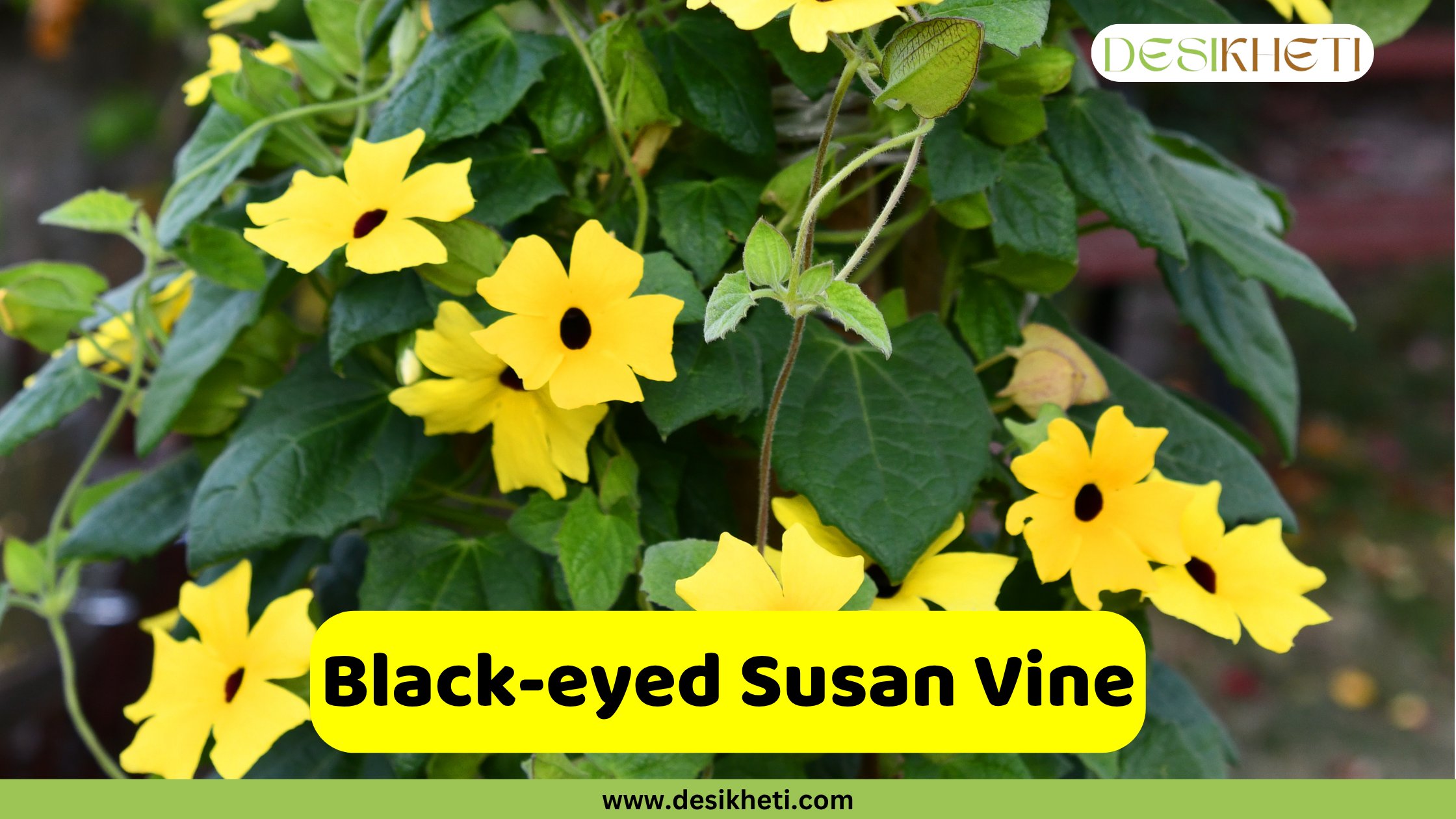
Botanical Name: Thunbergia alata
Black-eyed Susan Vine is a twining creeper with soft, heart-shaped leaves and cheerful flowers in shades of orange, yellow, or cream each with a distinct dark center, giving it the “black-eyed” name.
It blooms continuously from spring through late autumn in warm regions and thrives in full sun to partial shade. Its compact growth makes it ideal for small garden spaces or container gardening.
Uses and Benefits:
- Ideal for vertical accents in small gardens and balconies.
- Adds bright, eye-catching color for long durations.
- Attracts butterflies and small pollinators.
- Easily trained on trellises, arches, or balcony railings.
Lippia
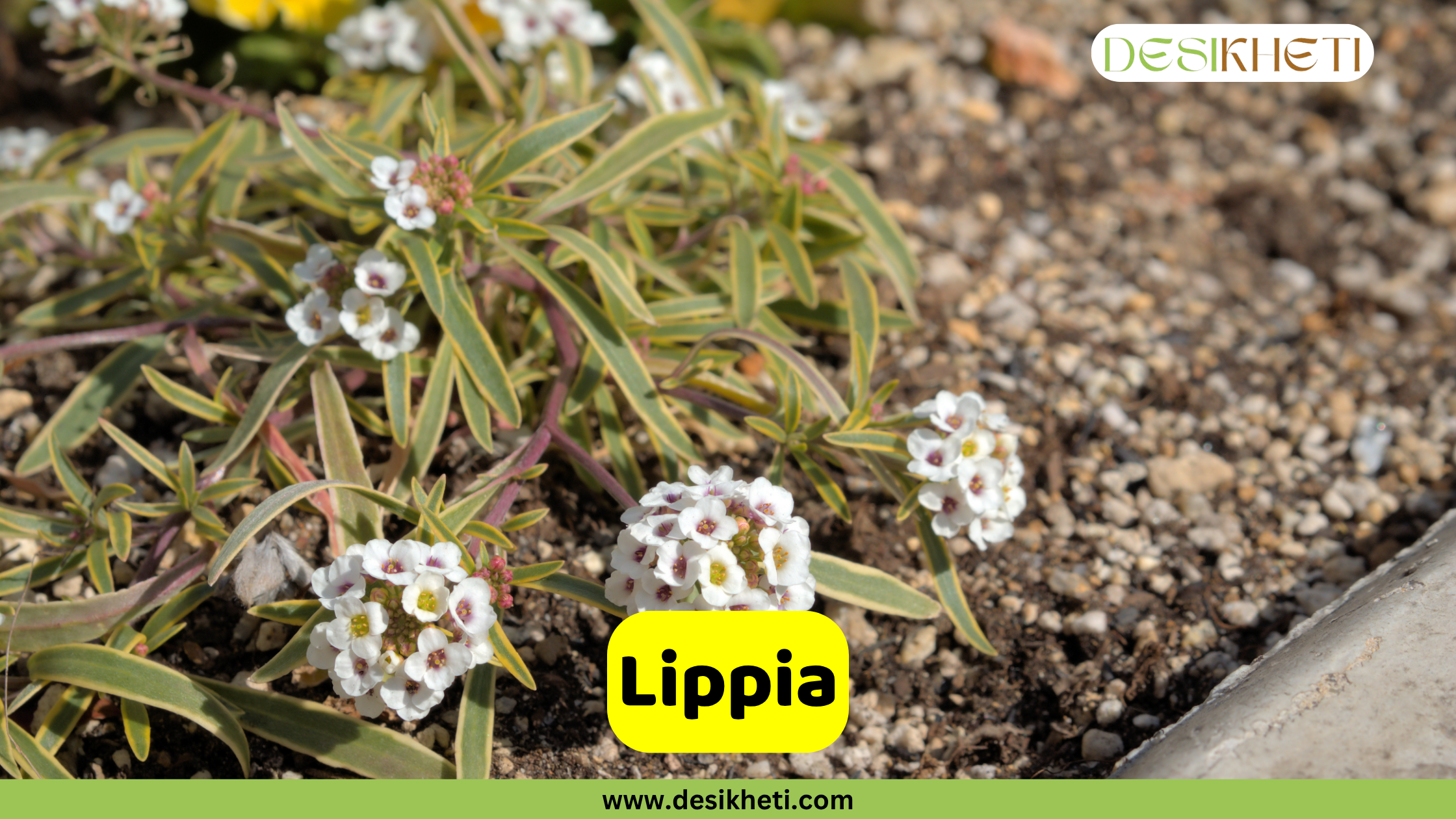
Botanical Name: Phyla nodiflora
Also called Frog Fruit or Carpetweed, Lippia produces small clusters of white to light purple flowers. It stays very low to the ground and can tolerate foot traffic, making it useful in open lawns and pathways. This plant blooms from late spring through summer and into early autumn in warm climates.
Uses and Benefits:
- Very low maintenance.
- Useful as a lawn substitute or between stepping stones.
Wedelia / Singapore Daisy
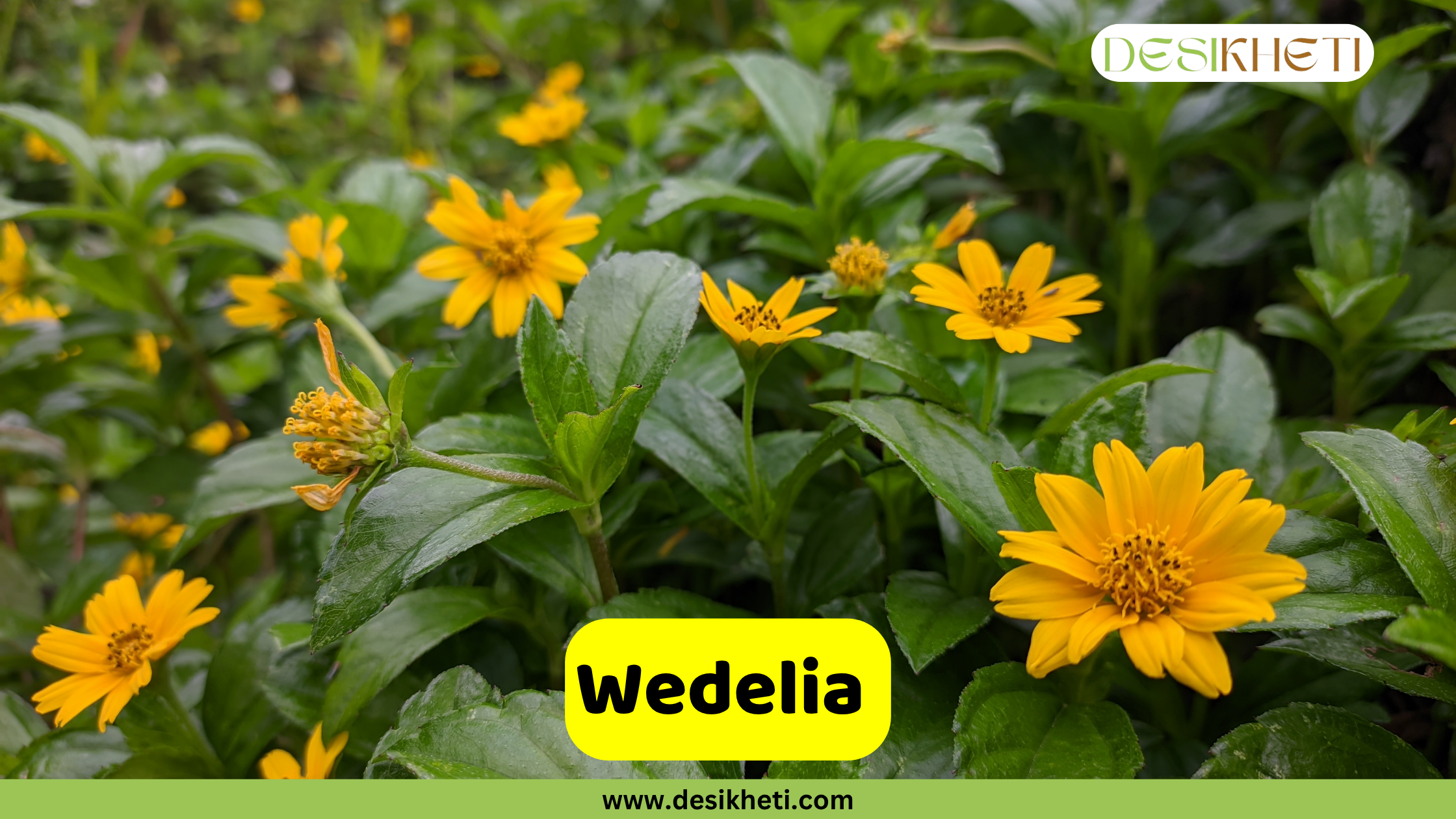
Botanical Name: Sphagneticola trilobata
Wedelia has glossy green leaves and cheerful yellow, daisy-like flowers that add a splash of brightness to any landscape. It is especially popular for thriving in warm Indian climates. The plant blooms profusely from spring through autumn, creating a dense floral carpet. Its drought tolerance and vigorous growth make it a favorite for low-maintenance gardening.
Uses and Benefits:
- Perfect for covering garden beds, borders, and slopes.
- Requires minimal care once established.
Creeping Zinnia
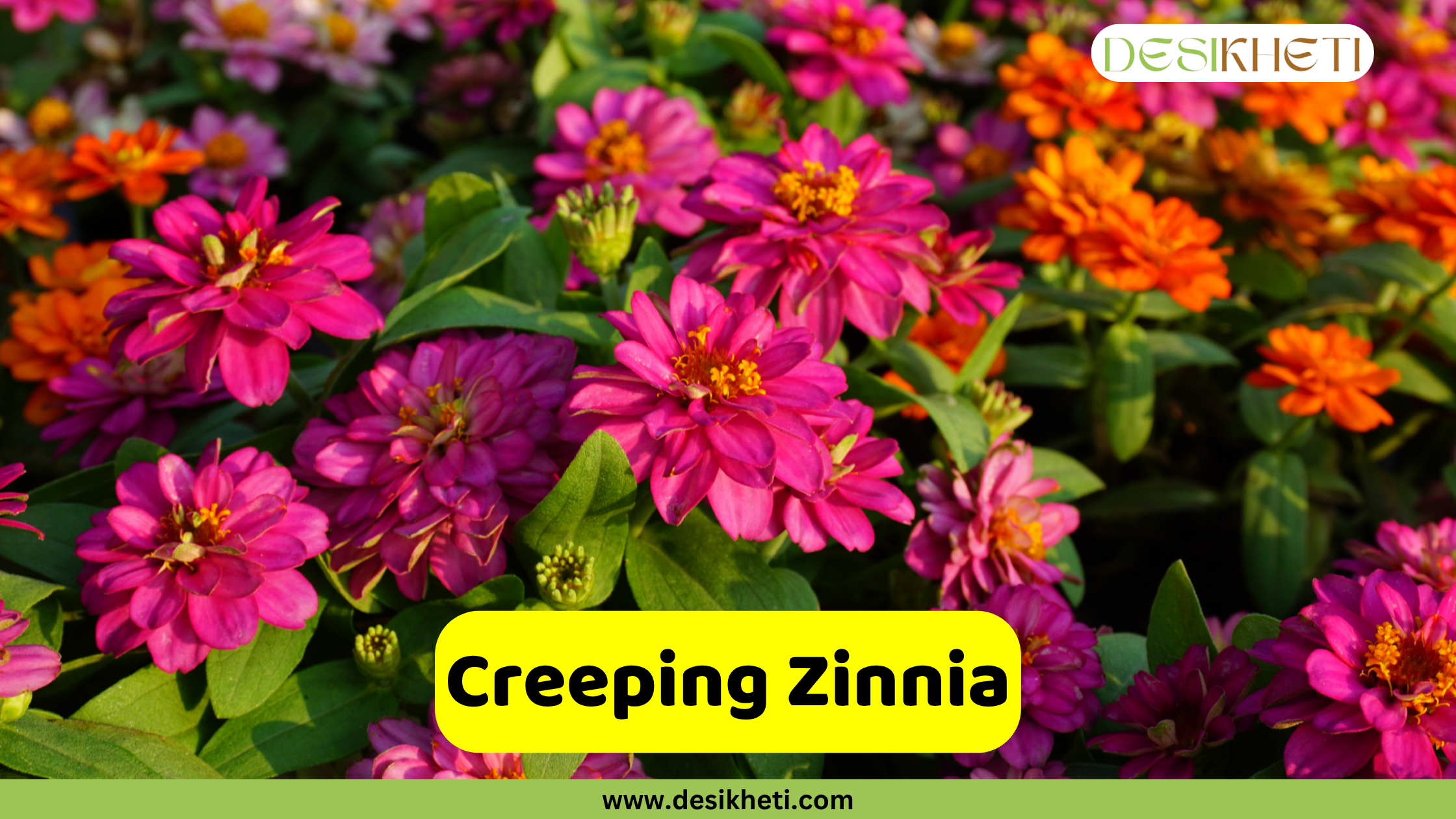
Botanical Name: Sanvitalia procumbens
Creeping Zinnia is a charming, low-growing creeper with small, yellow, daisy-like flowers featuring dark centers. Its compact and spreading nature makes it ideal for small gardens and containers. Flowers bloom mainly from summer to autumn. The plant grows quickly and is easy to maintain.
Uses and Benefits:
- Great for edging, borders, and hanging baskets.
- Attracts pollinators such as bees and butterflies.
Ice Plant
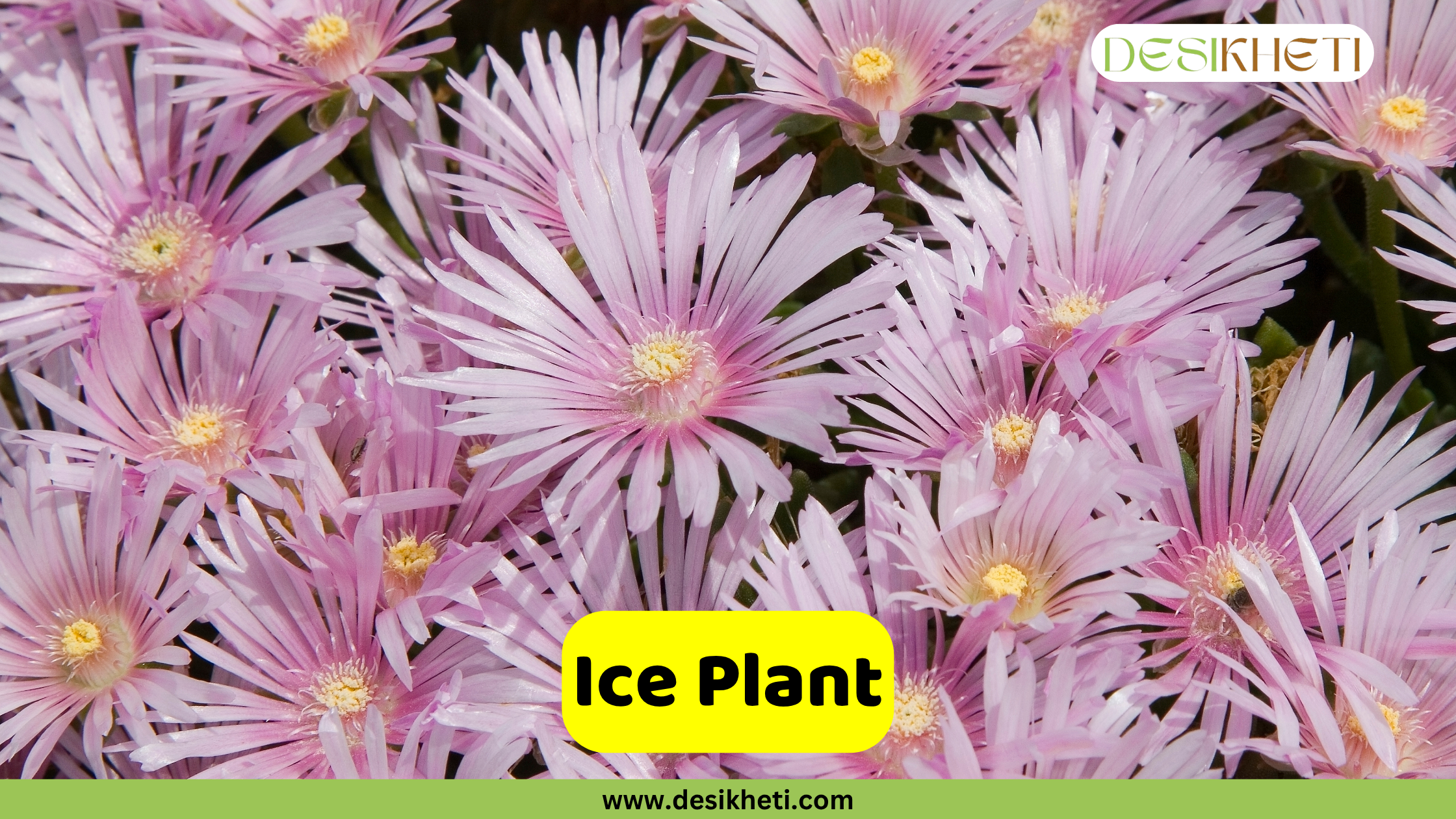
Botanical Name: Delosperma cooperi
Ice Plant is a succulent creeper with fleshy, needle-like leaves and bright magenta or purple flowers that resemble daisies. The flowers open during daylight, adding vivid color to arid gardens. It blooms from spring to summer and thrives in hot and dry regions, especially where traditional flowering plants may struggle.
Uses and Benefits:
- Excellent for rock gardens, sandy slopes, and dry landscapes.
- Requires very little water due to its succulent nature.
- Adds color to low-maintenance gardens.
Ground Morning Glory
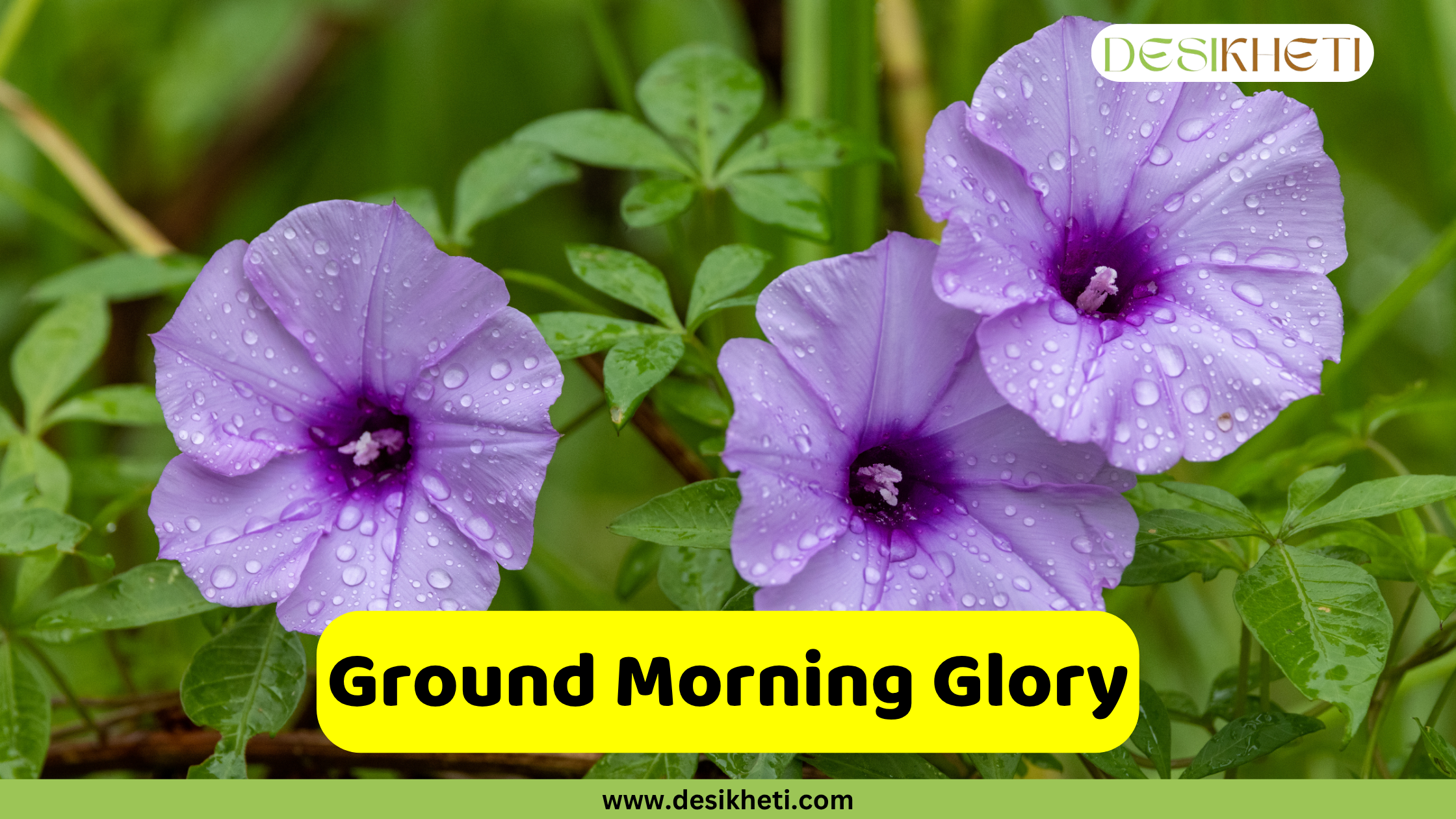
Botanical Name: Convolvulus sabatius
Ground Morning Glory is a low-trailing creeper with soft, silver-green foliage and trumpet-shaped flowers, typically bluish-purple to lavender-blue in color. It blooms mainly during the summer months and thrives in coastal and tropical conditions. Its sprawling habit makes it a favorite in beachside gardens and sandy areas.
Uses and Benefits:
- Suitable for ground cover in hot and coastal regions.
- Attracts pollinators.
Ground Cover Ruellia

Botanical Name: Ruellia simplex
Ground Cover Ruellia has glossy green leaves and striking tubular flowers in shades of violet-blue. Its continuous flowering and fast growth make it ideal for Indian gardens. It blooms year-round in warm climates and grows well in both sun and partial shade.
Uses and Benefits:
- Attracts butterflies and other pollinators.
- Provides year-round color in warm regions.
Garlic Vine
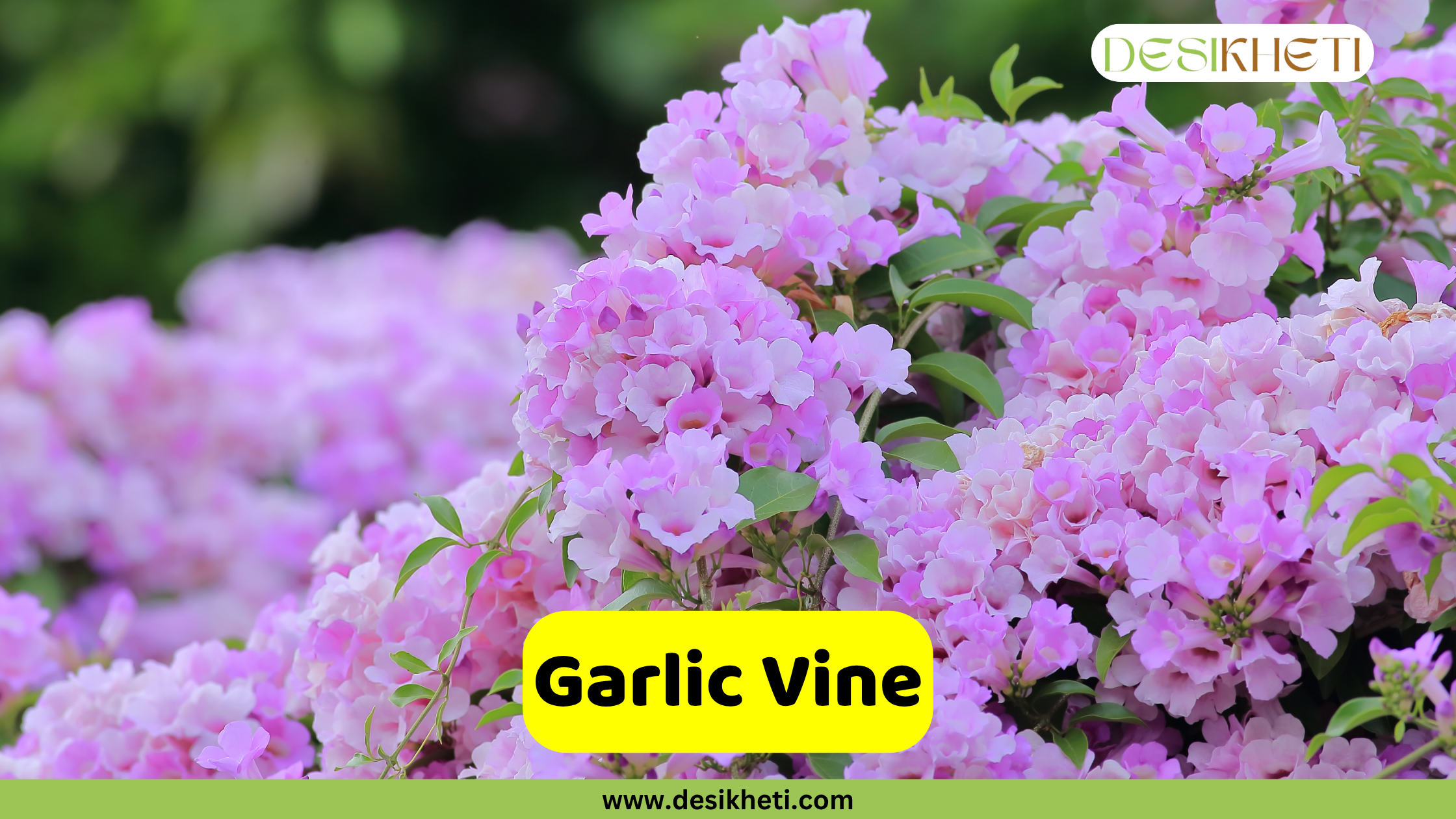
Botanical Name: Mansoa alliacea
Garlic Vine is a semi-woody, twining creeper with bright green leaves and trumpet-shaped flowers ranging from lavender to deep violet, often fading to pale lavender. It releases a garlic-like scent when its leaves or stems are crushed, although it doesn’t produce garlic.It blooms heavily twice a year in spring and autumn but may flower lightly throughout the year in warm climates. It grows well in full sun to partial shade and is ideal for pergolas, fences, and arches.
Uses and Benefits:
- Adds vibrant seasonal color with minimal care.
- Attracts bees, butterflies, and hummingbirds.
- Can be used as a living privacy screen.
- Offers a light fragrance when touched or crushed.
Coral Vine

Botanical Name: Antigonon leptopus
Coral Vine, also known as Mexican Creeper, is a vigorous climbing creeper with heart-shaped leaves and cascading clusters of bright pink or coral-colored flowers. It creates a stunning floral curtain when grown on trellises, fences, or walls. It blooms profusely from late summer to early winter and thrives in full sun. Its rapid growth and dense foliage make it ideal for ornamental coverage.
Uses and Benefits:
- Excellent for covering pergolas, gates, and chain-link fences.
- Attracts bees, butterflies, and other pollinators.
- Provides a lush, flowering canopy.
- Grows quickly and requires little maintenance once established.
Gazania
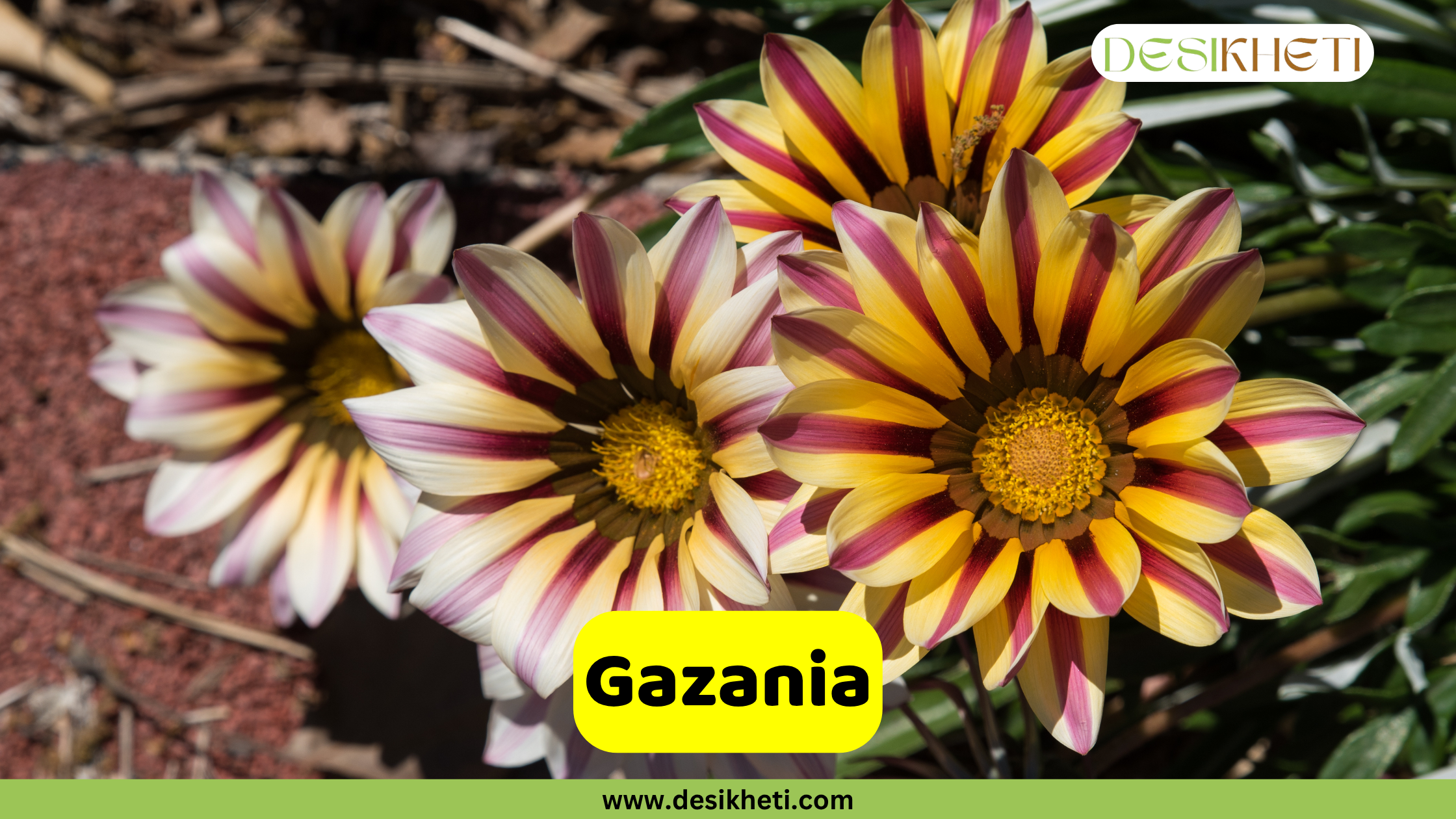
Botanical Name: Gazania rigens
Gazania is a sun-loving creeper with large, daisy-like flowers in vibrant shades of yellow, orange, red, and bronze. It is known for its bold colors and silver-green foliage. The plant blooms from late spring to autumn and thrives in full sun, making it especially suitable for hot and dry regions.
Uses and Benefits:
- Low-maintenance.
- Acts as a ground cover in harsh, sunny areas.
Flower Creepers by Color
- Red / Orange / Pink Shades:
- Cypress Vine (Red, Pink)
- Paper Flower (Bougainvillea – Pink, Red, Magenta)
- Trumpet Vine (Orange-Red)
- Flame Vine (Bright Orange)
- Coral Vine (Pink)
- Gazania (Yellow, Orange, Red)
- Blue / Purple Shades:
- Butterfly Pea (Deep Blue, Violet)
- Queen’s Wreath (Purple)
- Lavender Trumpet Vine (Lavender)
- Yellow Shades:
- Golden Trumpet (Bright Yellow)
- Black-eyed Susan Vine (Yellow with Black Center)
- Gazania (Yellow)
- White / Cream:
- Star Jasmine (White)
- Garlic Vine (Light Purple with White)
- Bower Vine (White to Pale Pink)
Flower Creepers by Sunlight Requirement
- Full Sun Lovers:
- Bougainvillea (Paper Flower)
- Trumpet Vine
- Flame Vine
- Golden Trumpet
- Gazania
- Coral Vine
- Black-eyed Susan Vine
- Butterfly Pea
- Garlic Vine
- Lavender Trumpet Vine
- Partial Shade to Full Sun:
- Star Jasmine
- Bower Vine
- Cypress Vine
- Queen’s Wreath
Flower Creepers by Growth Habit / Support Needed
- Climbers (need support):
- Trumpet Vine
- Flame Vine
- Queen’s Wreath
- Paper Flower
- Black-eyed Susan Vine
- Coral Vine
- Garlic Vine
- Bower Vine
- Star Jasmine
- Cypress Vine
- Sprawlers / Groundcover-like growth:
- Gazania
Flower Creepers by Fragrance
- Fragrant:
- Star Jasmine (strongly fragrant)
- Garlic Vine (garlic-like aroma when crushed)
- Bower Vine (mild fragrance)
- Queen’s Wreath (lightly fragrant)
- Non-Fragrant / Mildly Scented:
- Bougainvillea
- Cypress Vine
- Butterfly Pea
- Flame Vine
- Golden Trumpet
Flower Creepers by Usage / Benefits
- Ornamental Appeal (Color & Coverage):
- Bougainvillea
- Flame Vine
- Trumpet Vine
- Golden Trumpet
- Black-eyed Susan Vine
- Queen’s Wreath
- Coral Vine
- Attracts Pollinators (Bees, Butterflies, Birds):
- Butterfly Pea
- Trumpet Vine
- Cypress Vine
- Flame Vine
- Coral Vine
- Medicinal / Edible Uses:
- Butterfly Pea
- Garlic Vine
- Coral Vine
- Low Maintenance / Drought Tolerant:
- Bougainvillea
- Gazania
- Butterfly Pea
- Golden Trumpet
Other Popular Flower Creeper Plants
- Madhumalti / Rangoon Creeper
- Climbing Rose
- Passion Flower
- Mandevilla
- Honeysuckle Vine
- Bleeding Heart Vine
- Dutchman’s Pipe Vine
- Blue Sky Vine
- Sweet Pea Vine
- Wisteria
- Clerodendrum Vine
- Flaming Glorybower
Flowering creeper plants offer the perfect blend of beauty, functionality, and low maintenance for Indian gardens. Their sprawling growth habit helps fill empty spaces, cover unsightly areas, and add a natural touch to your landscape design. Whether you prefer vibrant daisies, fragrant blossoms, or butterfly-attracting blooms, there’s a creeper for every corner of your home or garden.
By choosing the right flowering creepers based on your local climate, sunlight availability, and soil conditions, you can create a lush, colorful environment that thrives year-round. So, go ahead, pick your favorites and let your garden bloom with cascading beauty!
FAQs on Flower Creepers
1. What is moss rose used for?
A. Moss rose (Portulaca grandiflora) is used as a vibrant ground cover in sunny gardens and borders, appreciated for its drought tolerance and colorful, rose-like blooms
2. What are the benefits of lantana?
A. Lantana is valued for attracting pollinators like butterflies and bees, offering long-lasting blooms, and providing erosion control in landscapes.
3. Is trailing lantana poisonous?
A. Yes, trailing lantana (Lantana montevidensis) is considered toxic to pets and livestock if ingested, especially the green berries.
4. What is blue daze used for?
A. Blue daze (Evolvulus glomeratus) is used as a ground cover or in hanging baskets, prized for its silvery foliage and sky-blue flowers.
5. What are the characteristics of Ipomoea cairica?
A. Ipomoea cairica has deeply lobed leaves, purple funnel-shaped flowers, and rapid climbing growth, making it ideal for quick coverage.
6. What is morning glory in India?
A. In India, Morning Glory refers to species like Ipomoea indica and Ipomoea purpurea, widely grown for ornamental and covering purposes.
7. What does the firecracker vine symbolize?
A. The firecracker vine symbolizes vitality, passion, and celebration due to its vibrant, cascading flowers resembling fireworks.
8. What are the special features of Phyla nodiflora?
A. Phyla nodiflora (frog fruit) spreads quickly as a mat-forming ground cover, tolerates heavy foot traffic, and blooms year-round in warm climates.
9. What is the local name for Phyla nodiflora?
A. In India, Phyla nodiflora is commonly known as “Poduthalai” in Tamil and “Bhookalmi” in Hindi.
10. Is creeping daisy perennial?
A. Yes, creeping daisy (Wedelia trilobata) is a fast-spreading perennial ground cover with yellow, daisy-like flowers.
11. What is another name for a daisy plant?
A. Daisies are also known as Bellis perennis (common daisies) or sometimes called “lawn daisies” or “English daisies.”
12. What is another name for the ice plant?
A. Ice plant is also known as Mesembryanthemum or Delosperma, depending on the species, and is admired for its succulent leaves and vivid blooms.
13. What are the benefits of the Ruellia flower?
A. Ruellia (Mexican petunia) is used for ornamental purposes and ground cover, attracting butterflies and adding long-lasting color to gardens.
14. Can you grow Ruellia from cuttings?
A. Yes, Ruellia can be easily propagated from stem cuttings placed in moist soil or water until roots develop.
15. What does white alder symbolize?
A. White alder symbolizes resilience and regeneration, as it often grows in disturbed soils and improves the ecosystem.
16. What is the taxonomy of white alder?
A. White alder belongs to the family Betulaceae, genus Alnus, and species Alnus rhombifolia.
17. What are some interesting facts about alyssum?
A. Alyssum is a low-growing, fragrant flower that attracts pollinators and is often used in borders or hanging baskets. It can reseed easily.
18. What are the benefits of alyssum?
A. Alyssum provides ground cover, suppresses weeds, attracts beneficial insects, and adds a sweet fragrance to gardens.
